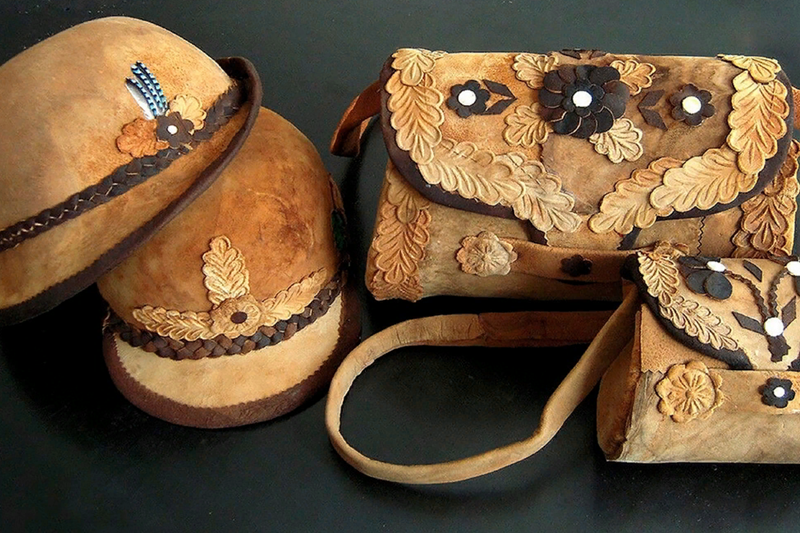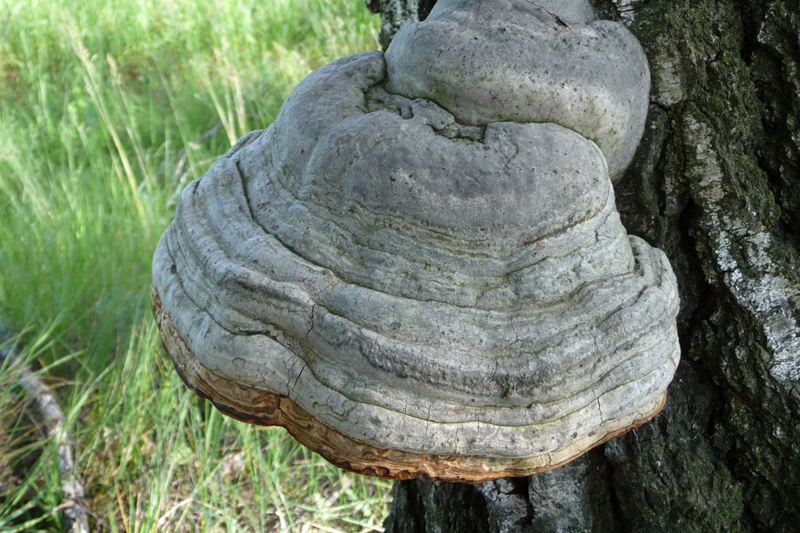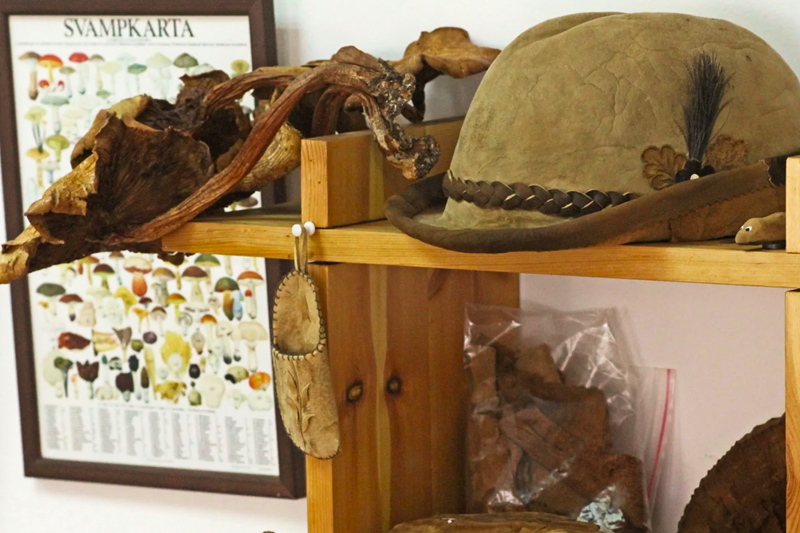Amadou is known as a spongy substance, manufactured from mushroom leather. It is a polypore and looks like a horse’s hoof. Among biological species identified as Fomes fomentarius, it is also known as tinder fungus or horse hoof mushroom, tinder conch, or iceman mushroom. Amadou is a medicinal mushroom that grows on the bark of coniferous and angiosperm trees. It is found in northern and southern Africa, Asia, and eastern North America.
How is Mushroom Leather Made
Depending on its condition, it can be smooth, velvet-like, or chamois leather.
Amadou vegan leather, made from the fruiting bodies of mushrooms, has been around for about 5,000 years. It is made from the root-like structure of mycelium that permeates dead wood or the soil under the mushrooms. For leather made from mushrooms process, high-quality mycelium is selected that is not spoiled by worms and insects, taking into account the time of year, humidity and temperature of the forest where the mushroom grew. The material is then tanned, creating textures that mimic the feel of animal skins like pig, cow, or snake. At the same time, the leather is quite durable due to the chitin content. The quality is influenced by the weather during the mushroom’s growth. Each growth ring reflects a season of ideal precipitation and temperature, so unstable or extreme conditions, such as too much or too little rainfall, can render growth rings unusable.

Amadou Through the Ages
The name Amadou tinder comes from its use – it has been used for centuries as tinder for starting fires and lighting evening bonfires. There is also an opinion that the name comes from the Middle French language “amadouer”, which means “to rudely, to entice, to bait”. “Kindling” is the name of a small piece of wood or a small branch used to light a fire, “spunk” is formed from the combination of two words “spark” and “funk”, originating in medieval English around 1530.
The Amadou mushroom is among the earliest medicinal mushrooms documented in medical history. The father of medicine, the Greek physician Hippocrates, is famous for his quote “Let food be medicine and medicine food!”
Studies of ancient burial sites have shown that Neolithic people collected and processed Fomes fomentarius to produce two different types of products: one was tinder used to start fires, and the other was a thicker one used to stop bleeding or for other medicinal purposes. Remains of the fungus have been found in mummies dating back 5 300 years.
In Ancient Greece, it was used by barbers. Ancient people treated problems associated with hemorrhoids and the bladder with it. In Early India, it was popular as a laxative, and in Ancient China, it was used to treat various types of cancer, wound dressing, and hemostasis (stopping bleeding). In Medieval Europe, mushroom leather was used for manufacturing hats, belts, similar leather goods, or other handicrafts.
In addition to medicine, Amadou was an object of interest for chemists, alchemists, and other scientists. Thus, German medieval chemists experimented with the properties of this component, trying to increase the flammability coefficient. To do this, they soaked it in potassium nitrate, the so-called “Salt Peter”. The material for obtaining “Salt Peter” was dirty straws from stable heaps. The urea from the urine was converted by bacterial decomposition into calcium nitrate.
The Comeback of Amadou
The mushroom mycelium leather market is rapidly expanding due to the growing demand for eco-friendly and environmentally friendly products in the global trends. It is attractive to brands and customers who care about the environment as it is a biodegradable and sustainable solution. Mushroom leather products can interest the fashion industry by creating awareness of the consumption of animal-based leather substitutes. Unfortunately, limited production capacity and lack of government support for small businesses affect the number of Amadu makers and mushroom leather companies who continue to keep the secrets of ancient technologies. Rapid climate change affects the change of seasons from spring to autumn, and the huge scale of deforestation has a detrimental effect on the habitat of mushrooms and their harvest.
Today, Amadou craftsmen can be found in Romania. They offer tourists both guided group tours and master classes in old authentic houses. Hurry to visit them and discover this amazing world of ancient crafts.




